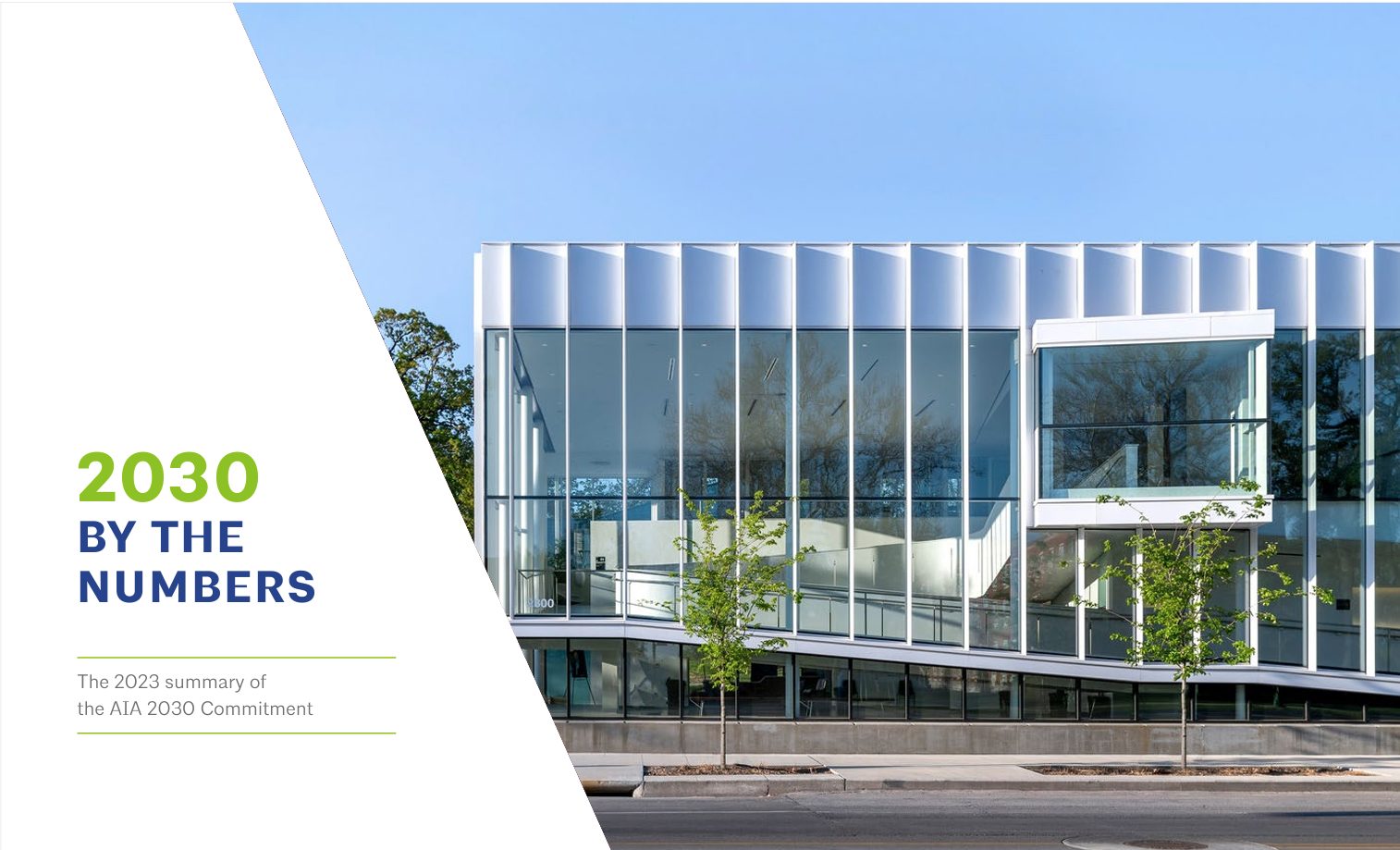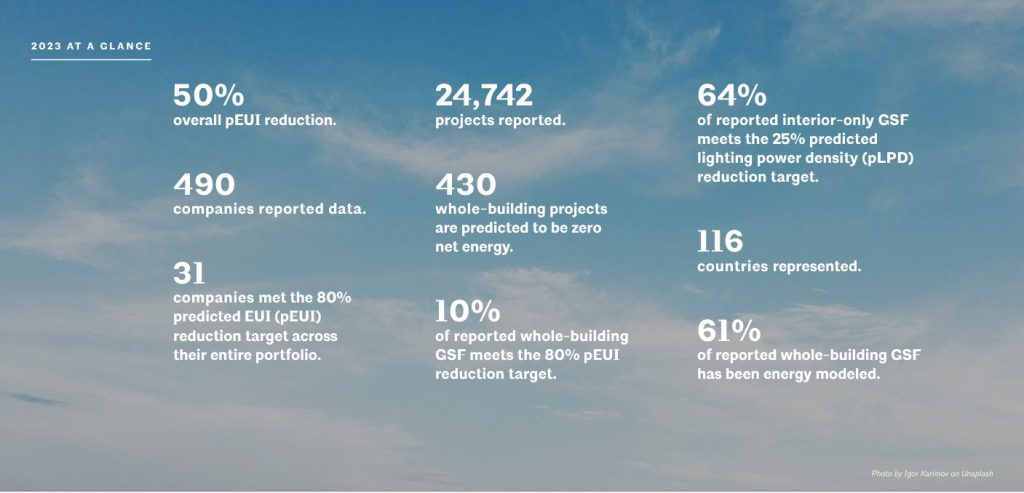
Achieving Carbon Neutrality — Reporting Progress on the AIA 2030 Commitment
In the most recent AIA 2030 By The Numbers report, BNIM is among 31 companies that met the 80% predicted EUI reduction target across our entire portfolio in 2023.
The annual report highlights significant statistics from a total of 490 signatory companies reported on projects spanning 116 countries [1]:
- Overall 50% predicted EUI reduction (pEUI) for whole-building projects reported
- 36% predicted lighting power density (pLPD) reduction in interiors-only projects reported
- Reported projects represent $12.07 billion in energy savings over baseline
- A significant increase in reporting for embodied carbon data, including over 7,000 projects [1].
Concurrently, areas for improvement among firms include whole-building energy modeling reporting, which has experienced a decline in reporting over three years, attributed in part to client goals for short-term cost savings. To address this, architects and designers are encouraged to communicate with project and client teams about leveraging data for informed decision-making and how integrating energy modeling early in the design process can ultimately produce higher value and cost-savings for the long term, leading to better outcomes for organizations while minimizing environmental impact [1].
The AIA 2030 Commitment has engaged design firms globally over the past 15 years in a collective pursuit of achieving carbon-neutral buildings by 2030. Firms who participate in the 2030 Commitment share building performance of their project portfolios annually to demonstrate and track progress. Through the 2030 Commitment, firms are actively working toward a net-zero emissions future by:
- Integrating energy modeling into the design process
- Tracking fuel sources
- Electrifying projects
- Utilizing renewable energy
- Reducing embodied carbon
- Prioritizing peer-to-peer engagement
- Clearly communicating firm-wide goals and missions
- Implementing data-driven operations [1]
BNIM continues to rigorously pursue the 2030 Commitment and our goals for carbon neutrality — we commit to reducing the embodied carbon dioxide emissions across all projects by 65% by 2030, 100% by 2040, and 20% net positive by 2050.


